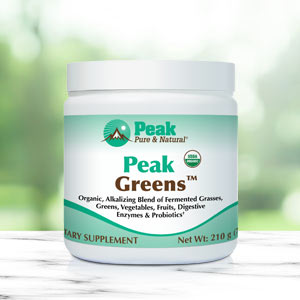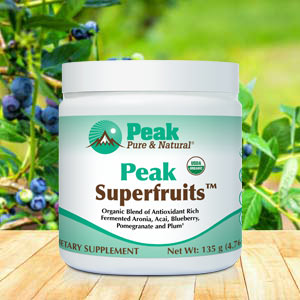Get Easy Health Digest™ in your inbox and don’t miss a thing when you subscribe today. Plus, get the free bonus report, Mother Nature’s Tips, Tricks and Remedies for Cholesterol, Blood Pressure & Blood Sugar as my way of saying welcome to the community!
Pesticides in produce: A guide to safe, cost-effective choices

The American Heart Association recommends that adults eat four servings of fruit and five servings of vegetables every day.
Getting enough fruits and vegetables in your daily diet is essential to good health.
But if you’re not careful, you’ll get a healthy dose of pesticides, too — negating those disease-fighting nutrients.
If you’re looking to “clean up your act” when it comes to the produce you eat, look no further than the environmental health advocacy nonprofit known as the Environmental Working Group (EWG).
Since 2004, the EWG has produced a yearly guide to the dirtiest and the cleanest fruits and vegetables.
Here are the highlights from their 2022 “Shopper’s Guide to Pesticides in Produce.”
The healthiest fruits and veggies are also the most poisonous
For the current guide, the EWG analyzed the latest test data from the Department of Agriculture (USDA) and the Food and Drug Administration (FDA).
They found that more than 70 percent of non-organic fresh produce sold in the U.S. contains residues of potentially harmful pesticides.
Many of these poisons are still found on fruits and vegetables after they’ve been washed, peeled or scrubbed (the USDA does all these things before testing for pesticide levels).
And which pesticides are we talking about, exactly?
- Dacthal – classified by the Environmental Protection Agency (EPA) as a possible human carcinogen, was most frequently detected on kale and mustard greens (the European Union banned the use of this pesticide in 2009).
- Glyphosate – doubles your risk for non-Hodgkin lymphoma. A 2022 FDA report found super-high levels of glyphosate in lentils, chickpeas and beans.
- Chlorpyrifos – this neurotoxin (causes nerve damage) was found in pears, strawberries and celery, among others
The EWG’s “Dirty Dozen” for 2022
Here, then, is this year’s list of the most pesticide-ridden fruits and vegetables, starting with the dirtiest.
- Strawberries
- Spinach
- Kale, collard and mustard greens
- Nectarines
- Apples
- Grapes
- Bell and hot peppers
- Cherries
- Peaches
- Pears
- Celery
- Tomatoes
And the alternatives: the “Clean 15”
These fruits and veggies had the lowest amounts of pesticide, according to the EWG’s analysis of the most recent USDA data.
Almost 70 percent of “clean fifteen” fruit and vegetable samples had no detectable pesticide residues.
The list starts with the “cleanest” produce – avocados and sweet corn. Under two percent of samples had no detectable pesticide residues.
Here’s the “Clean Fifteen” for 2022:
- Avocados
- Sweet corn
- Pineapple
- Onions
- Papaya
- Sweet peas
- Asparagus
- Honeydew melon
- Kiwi
- Cabbage
- Mushrooms
- Cantaloupe
- Mangoes
- Watermelon
- Sweet Potatoes
Making cost-effective and safer choices
Now, there are those “experts” who say because Americans don’t eat enough fruits and vegetables, most people don’t consume enough of these pesticides to experience harm. But that’s a double downer…
Fruits and vegetables, like berries, apples and leafy greens, for example, can do powerful things for your health and you should make an effort to eat more of them, safely.
The environmental nonprofit Friends of the Earth conducted a study on the impact organic eating has on pesticide levels in our bodies. And the results were pretty amazing, especially when it came to clearing these poisons from the body.
The USDA certifies produce as “organic” if it has been grown in soil where no fertilizers or pesticides have been applied for three years prior to harvest. Thus, you are guaranteed that your produce is free of pesticides.
Of course, organic produce is expensive. That’s where the “Dirty Dozen” and “Clean Fifteen” lists come in.
If you really love strawberries, for example, buy organic since they top the dirty list. On the other hand, you’re probably OK buying non-organic avocados, sweet potatoes and other “Clean Fifteen” produce.
When buying produce, use the “Dirty Dozen” and “Clean Fifteen” lists as your guides to making decisions that are both healthy and cost-effective.
Editor’s note: Did you know that when you take your body from acid to alkaline you can boost your energy, lose weight, soothe digestion, avoid illness and achieve wellness? Click here to discover The Alkaline Secret to Ultimate Vitality and revive your life today!
Sources:
Dirty Dozen: EWG’s 2022 Shopper’s Guide to Pesticides in Produce — EWG
Clean Fifteen: EWG’s 2022 Shopper’s Guide to Pesticides in Produce — EWG
EWG’s 2022 Shopper’s Guide to Pesticides in Produce — EWG
FDA tests find U.S. food supply awash in pesticide residues — EWG














